Ernst Mayr ( 1904-2004)
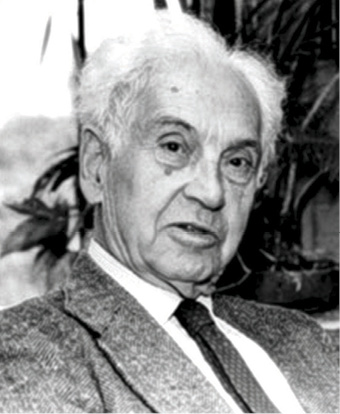
- Born on 5 July 1904, in Kempten, Germany, ERNST MAYR, the Harvard University evolutionary biologist who has been called ‘The Darwin of the 20th century’, was one of the 100 greatest scientists of all time.
- He also pioneered the currently accepted definition of a biological species. (NEET 2016)
- Mayr was awarded the three prizes widely regarded as the triple crown of biology: the Balzan Prize in 1983, the International Prize for Biology in 1994, and the Crafoord Prize in 1999.
What is 'Living' ?
- Growth, reproduction, ability to sense environment and mount a suitable response come to our mind immediately as unique features of living organisms.
- More features like metabolism, ability to self-replicate, self-organize,interact and emergence to this list.
Growth
- All living organisms grow.
- Increase in mass and increase in number of individuals are twin characteristics of growth.
- Organisms grows by cell division.
- In plants, this growth by cell division occurs continuously throughout their life span.
- In animals, this growth is seen only up to a certain age.
- In unicellular One can easily observe this invitro cultures by simply counting the number of cells under the microscope.
- In majority of higher animals and plants, growth and reproduction are mutually exclusive events.
- In living organisms, growth is from inside.
- Growth cannot be taken as a defining property of living organisms.
Reproduction -
- Reproduction, likewise, is a characteristic of living organisms.
- It is of two types Sexual and Asexual.
- In multicellular organisms, reproduction refers to the production of progeny possessing features more or less similar to those of parents.
- Reproduction in some organisms
- Fungi multiply and spread easily due to the millions of asexual spores they produce.
- In yeast and hydra, we observe budding.
- In Planaria (flat worms), true regeneration, i.e., a fragmented organism regenerates the lost part of its body and becomes, a new organism
- The fungi, the filamentous algae, the protonema of mosses, all easily multiply by fragmentation.
- unicellular organisms like bacteria, unicellular algae or Amoeba, reproduction is synonymous with growth, i.e., increase in number of cells. (NEET 2016)there are many organisms which do not reproduce (mules, sterile worker bees, infertile human couples, etc).
11. Reproduction also cannot be an all-inclusive defining characteristic of living organisms
Metabolism
The sum total of all the chemical reactions occurring in our body is metabolism.
- All living organisms are made of chemicals. These chemicals, small and big, belonging to various classes, sizes, functions, etc., are constantly being made and changed into some other biomolecules. These conversions are chemical reactions or metabolic reactions.
- There are thousands of metabolic reactions occurring simultaneously inside all living organisms.
- No non-living object exhibits metabolism.
- metabolism is a defining feature of all living organisms without exception, isolated metabolic reactions in vitro are not living things but surely living reactions. (NEET 2011)
Cellular organisation of the body is the defining feature of life forms.
Consciousness
- All living organisms is this ability to sense their surroundings or environment and respond to these environmental stimuli which could be physical, chemical or biological.
- Plants respond to external factors like light, water, temperature, other organisms, pollutants, etc.
- All organisms, from the prokaryotes to the most complex eukaryotes can sense and respond to environmental cues.
- Photoperiod affects reproduction in seasonal breeders, both plants and animals.
- Human being is the only organism who is aware of himself, i.e., has self-consciousness.
6.Consciousness therefore, becomes the defining property of living organisms.
self replicating/Self evolving and self regulating
- The living organisms are self-replicating, evolving and self-regulating interactive systems capable of responding to external stimuli.
BIOLOGY IS THE STORY OF LIVING ORGANISM ON EARTH
Diversity in the Living World
- Each different kind of plant, animal or organism that you see, represents a species.
- The number of species that are known and described range between 1.7-1.8 million.
- This refers to biodiversity or the number and types of organisms present on earth.
- Nomenclature
- the naming of living organisms such that a particular organism is known by the same name all over the world. This process is called nomenclature.
- Obviously, nomenclature or naming is only possible when the organism is described correctly and we know to what organism the name is attached to. This is identification.
- For plants, scientific names are based on agreed principles and criteria, which are provided in International Code for Botanical Nomenclature (ICBN).
- Animal taxonomists have evolved International Code of Zoological Nomenclature (ICZN). (NEET 2016)
- The scientific names ensure that each organism has only one name.
- Biologists follow universally accepted principles to provide scientific names to known organisms.
- Each name has two components – the Generic name and the specific epithet. This system of providing a name with two components is called Binomial nomenclature.
- This naming system given by Carolus Linnaeus is being practised by biologists all over the world. (NEET 2016)
- universal rules of nomenclature are as follows:
- Biological names are generally in Latin and written in italics. They are Latinised or derived from Latin irrespective of their origin.
- The first word in a biological name represents the genus while the second component denotes the specific epithet.
- Both the words in a biological name, when handwritten, are separately underlined, or printed in italics to indicate their Latin origin.
- The first word denoting the genus starts with a capital letter while the specific epithet starts with a small letter. It can be illustrated with the example of Mangifera indica. (NEET 2016 II )
- Name of the author appears after the specific epithet, i.e., at the end of the biological name and is written in an abbreviated form, e.g., Mangifera indica Linn. It indicates that this species
was first described by Linnaeus. (NEET 2019)
- scientific name thus, for human being, is written as Homo sapiens.
• Classification
Classification is the process by which anything is grouped into convenient categories based on some easily observable characters. For example, we easily recognise groups such as plants or animals or dogs, cats or insects
• Taxa
You must recognise that taxa can indicate categories at very different levels. ‘Plants’ – also form a taxa. ‘Wheat’ is also a taxa. Similarly, ‘animals’, ‘mammals’, ‘dogs’ are all taxa – but you know that a dog is a mammal and mammals are animals. Therefore, ‘animals’, ‘mammals’ and ‘dogs’ represent taxa at different levels.
• Taxonomy
- based on characteristics, all living organisms can be classified into different taxa. This
process of classification is taxonomy.
- characterisation, identification, classification and nomenclature are the processes that are basic to taxonomy.
• Systematics.
- The word systematics is derived from the Latin word ‘systema’ which means systematic arrangement of organisms.
- Linnaeus used Systema Naturae as the title of his publication.
- The scope of systematics was later enlarged to include identification, nomenclature and classification.
Taxonomic Categories
- Since the category is a part of overall taxonomic arrangement, it is called the taxonomic category and all categories together constitute the taxonomic hierarchy.
- Each category, referred to as a unit of classification, in fact, represents a rank and is commonly termed as taxon (pl.: taxa).
- Taxonomical studies of all known organisms have led to the development of common categories such as kingdom, phylum or division (for plants), class, order, family, genus and species.
- species as the lowest category.
- This helps in identifying similarities and dissimilarities among the individuals of the same kind of organisms as well as of other kinds of organisms.
Species
- a group of individual organisms with fundamental similarities as a species.
- Let us consider Mangifera indica, Solanum tuberosum (potato) and Panthera leo (lion). All the three names, indica, tuberosum and leo, represent the specific epithets.
- the first words Mangifera, Solanum and Panthera are genera and represents another higher level of taxon or category.
- Each genus may have one or more than one specific epithets representing different organisms, but having morphological similarities.
▪ Genus
- Genus comprises a group of related species which has more characters in common in comparison to species of other genera.
- For example, potato and brinjal are two different species but both belong to the genus Solanum.
- Lion (Panthera leo), leopard (P. pardus) and tiger (P. tigris) with several common features, are all species of the genus Panthera. (NEET 2011,2012)
▪ Family
- Family, has a group of related genera with still less number of similarities as compared to genus and species.
- Among plants for example, three different genera Solanum, Petunia and Datura are placed in the family Solanaceae.
- Among animals for example, genus Panthera, comprising lion, tiger, leopard is put along with genus, Felis (cats) in the family Felidae.
- Cats Family = Felidae
- Dogs Family = Canidae
• categories like species, genus and families are based on a number of similar character.
- order and other higher taxonomic categories are identified based on the aggregates of characters.
Order
- Order being a higher category, is the assemblage of families which exhibit a few similar characters.
- . Plant families like Convolvulaceae, Solanaceae are included in the order Polymoniales mainly based on the floral characters.
- The animal order, Carnivora, includes families like Felidae and Canidae.
- The Order of Horse is Equidae . (NEET 2017)
Class
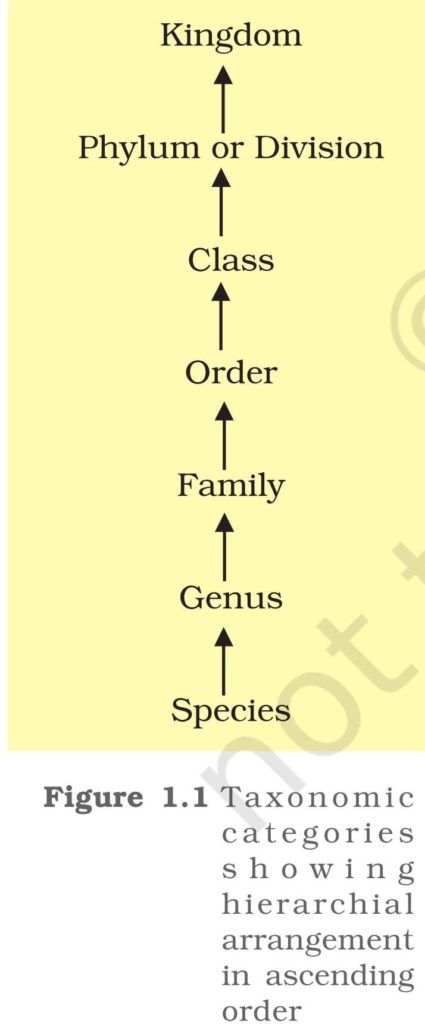
- This category includes related orders.
- For example, order Primata comprising monkey, gorilla and gibbon is placed in class Mammalia along with order Carnivora that includes animals like tiger, cat and dog.
▪Phylum
- Classes comprising animals like fishes, amphibians, reptiles, birds along with mammals constitute the next higher category called Phylum.
- In case of plants, classes with a few similar characters are assigned to a higher category called Division.
Kingdom
- All animals belonging to various phyla are assigned to the highest category called Kingdom Animalia.
- The Kingdom Plantae, on the other hand, is distinct, and comprises all plants from various divisions.
- taxonomists have also developed sub-categories in this hierarchy to facilitate more sound and scientific placement of various taxa.
☆ As we go higher from species to kingdom, the number of common characteristics goes on decreases .
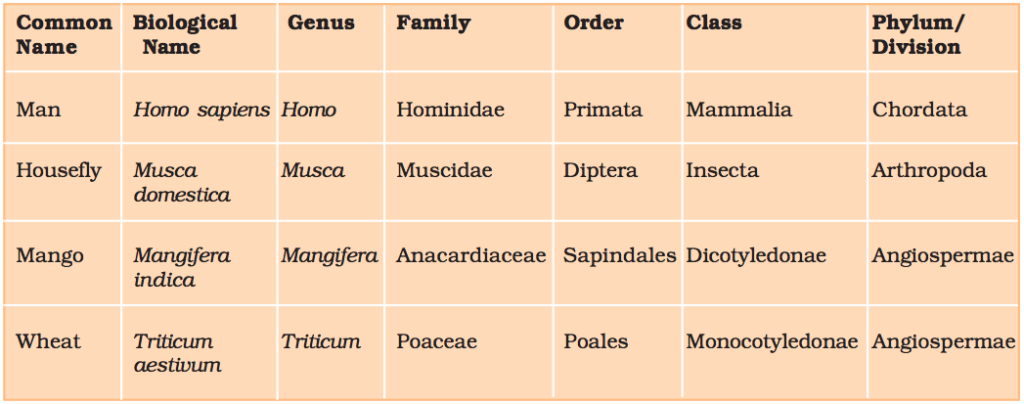
▪ Taxonomical Aids
- Taxonomic studies of various species of plants, animals and other organisms are useful in agriculture, forestry, industry and in general in knowing our bio-resources and their diversity.
- Identification of organisms requires intensive laboratory and field studies.
- It is used for classification.
- It include
- - Herbarium ii - Botanical Garden iii - Museum iv - Zoological Parks v - Key
Herbarium

- Herbarium is a store house of collected plant specimens that are dried, pressed and preserved on sheets. (NEET 2013,2018)
- These sheets are arranged according to a universally accepted system of classification.
- These specimens, along with their descriptions on herbarium sheets, become a store house or repository for future use.
- The herbarium sheets also carry a label providing information about date and place of collection, English, local and botanical names, family, collector’s name, etc (NEET 2016)
- Herbaria also serve as quick referral systems in taxonomical studies.
Botanical Gardens
- These specialised gardens have collections of living plants for reference.
- Plant species in these gardens are grown for identification purposes and each plant is labelled indicating its botanical/scientific name and its family.
- The famous botanical gardens are at Kew (England), Indian Botanical Garden, Howrah (India) and at National Botanical Research Institute, Lucknow (India).
Museum(NEET 2013)
- Biological museums are generally set up in educational institutes such as schools and colleges.
- Museums have collections of preserved plant and animal specimens for study and reference.
- Specimens are preserved in the containers or jars in preservative solutions.
- Plant and animal specimens may also be preserved as dry specimens. (NEET 2018)
- Insects are preserved in insect boxes after collecting, killing and pinning.
- Larger animals like birds and mammals are usually stuffed and preserved.
Museums often have collections of skeletons of animals too
Zoological Parks
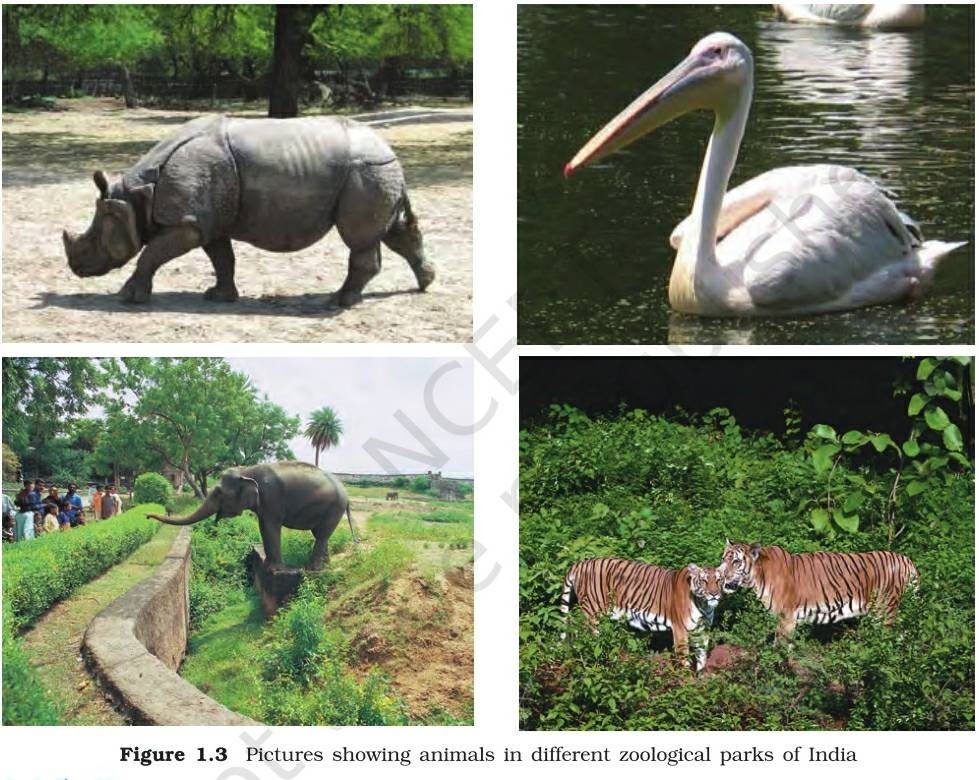
- These are the places where wild animals are kept in protected environments under human care and which enable us to learn about their food habits and behaviour.
- All animals in a zoo are provided, as far as possible, the conditions similar to their natural habitats
Key
- Key is another taxonomical aid used for identification of plants and animals based on the similarities and dissimilarities. (NEET 2013)
- The keys are based on the contrasting characters generally in a pair called couplet.
- Separate taxonomic keys are required for each taxonomic category such as family, genus and species for identification purposes. (Identification of various taxa). (NEET 2018)
- Each statement in the key is called a lead.
- Keys are generally analytical in nature.
• Other means of recording descriptions :
i - Flora ii - manuals iii - monographs iv - catalogues
. i - Flora
- They also help in correct identification
- Flora contains the actual account of habitat and distribution of plants of a given area. These provide the index to the plant species found in a particular area.
i - Manuals
- Manuals are useful in providing information for identification of names of species found in an area.
ii - Monograph
- Monographs contain information on any one taxon. iv - Catalogues (NEET 2018)
- A list that enumerates methodically all the species found in an area with brief description aiding identification. ( Alphabetical listing of species).

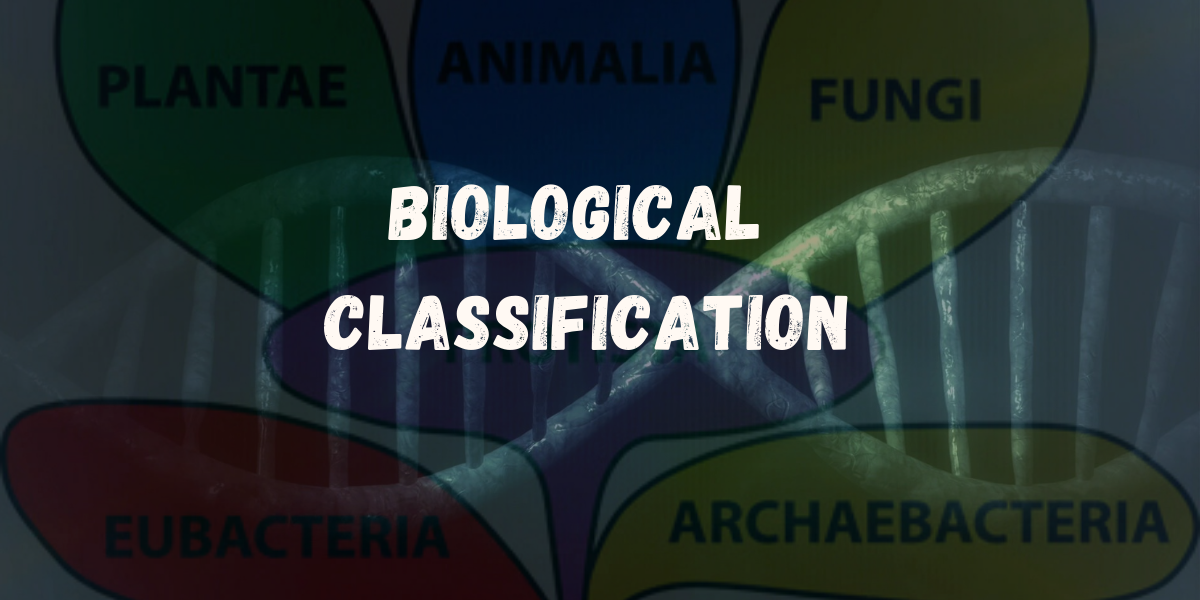
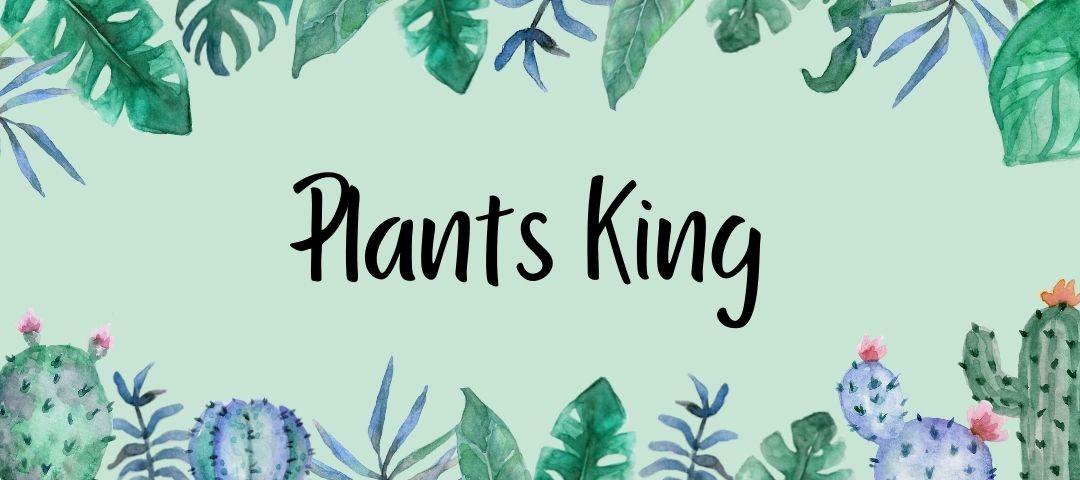
… [Trackback]
[…] Read More on on that Topic: eklabhyaclasses.com/blog/living-world-ncert-note/ […]
… [Trackback]
[…] Find More Information here on that Topic: eklabhyaclasses.com/blog/living-world-ncert-note/ […]
… [Trackback]
[…] Read More Info here on that Topic: eklabhyaclasses.com/blog/living-world-ncert-note/ […]
… [Trackback]
[…] Find More Info here on that Topic: eklabhyaclasses.com/blog/living-world-ncert-note/ […]
… [Trackback]
[…] Read More here to that Topic: eklabhyaclasses.com/blog/living-world-ncert-note/ […]
… [Trackback]
[…] There you will find 38418 more Information to that Topic: eklabhyaclasses.com/blog/living-world-ncert-note/ […]